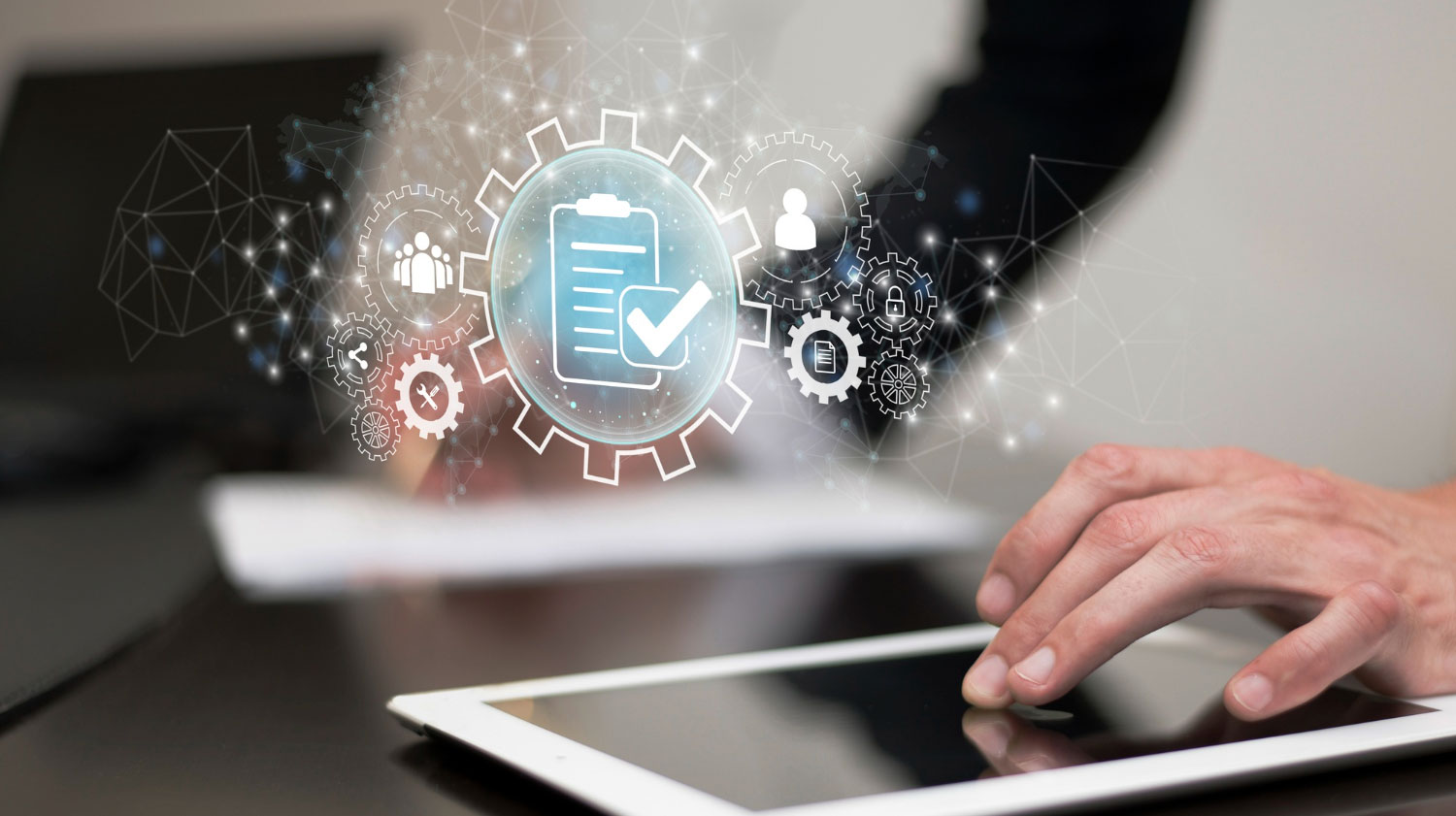
Blog
What are HL7 and FHIR Standards?
In today's data-driven world, healthcare is no exception. The exchange of patient data across different healthcare information systems and providers is essential for delivering high-quality, coordinated and personalized care for better treatment outcomes. Yet even though it is clear what needs to be done, things are not that easy in digital health. The expansion of disparate data formats and standards often creates challenges. Picture yourself navigating a labyrinth with an incomplete map or half in a foreign language. That's the challenge of healthcare data management without standardized guidelines!
International standards are essential to navigate the healthcare labyrinth and ensure that healthcare data, specifically electronic health records (EHR), are securely and accessibly shared only with authorized individuals who need them to provide optimal patient care and improve health information management. Data standards should be considered universal backbones, enabling data exchange between systems. By establishing a common language, these standards bridge the gaps between disparate data sources, creating a cohesive information network.
One of the most commonly heard terms in health information technology is HL7 Fast Healthcare Interoperability Resources (FHIR.) So, what exactly are HL7 and FHIR? The FHIR standards define how data can be exchanged between different information systems, regardless of how that data is stored. It ensures that healthcare data, both clinical and administrative, is securely accessible to authorized individuals. Health Level 7 (HL7), the organization behind FHIR, follows a collaborative process to develop and update this standard. In this blog, we'll explore the world of FHIR and HL7, focusing on their evolution and benefits and highlighting our related products as sectoral leaders, Tiga Healthcare Technologies!

The Evolution of Healthcare Data Standards
In the old days of healthcare, information exchange was cumbersome and inefficient. Medical records, often handwritten and stored in dusty files, were hard to find. The challenges in accessing medical records, the lack of standardization and the difficulty for different providers to interpret them, combined with the absence of electronic medical records (EMR) and digital systems, created significant barriers. Recognizing the potential of EMR systems to transform healthcare through data standards, healthcare professionals and policymakers decided to tackle these challenges by exploring how these standards could positively impact healthcare digitalization.
Many providers developed their own proprietary data formats and application programming interfaces (API), which led to a fragmented environment of data-sharing solutions. This lack of universal standardization significantly burdened integration teams, who often had to develop custom implementations for each platform. The result was increased time and costs associated with integration efforts. Ironically, APIs designed to facilitate data exchange became obstacles to broader integration strategies.
Thus, the first step was to create international terminologies and classifications for healthcare conditions, procedures and treatments. This foundation would provide a consistent language for healthcare data. The most important example is the development of standards like FHIR, which was crucial in transforming healthcare data exchange and enhancing HL7 interoperability standards.

What is HL7?
Established in 1987, Health Level Seven International (HL7) is a non-profit organization that aims to develop HL7 standards for the seamless exchange, integration and retrieval of electronic health information. 'Level 7' refers to the highest level of the International Organization for Standardization's (ISO) seven-layer communication model Open Systems Interconnection (OSI) and is responsible for data interpretation and presentation.
HL7 is supported by a global network of over 1,600 members from more than 50 countries, including 500+ organizations representing healthcare providers, government agencies, payers, pharmaceutical companies, health technology vendors and consulting firms. Thanks to global health data interoperability, they all aim to create a world in which everyone securely accesses and uses accurate health data anywhere, anytime.
Key Components of HL7 Standards
HL7 standards, at their core, are messaging protocols that define the structure and content of messages with a common communication language exchanged between healthcare systems. With this encompassing data format, HL7 specifies how information is presented within messages, allowing for consistent interpretation and processing. This interoperability facilitates efficient patient care, improves decision-making processes and reduces workflow errors.

These comprehensive standards provide a common framework for healthcare providers to communicate and share data across different information systems and applications. The rules for packaging and transmitting information between different systems define the language, structure and data types necessary for ensuring interoperability and seamless healthcare data exchange. Also, organizations can adopt a phased approach for implementation stages with the guidance of HL7, starting with more straightforward use cases and gradually expanding as expertise and resources grow.
This guidance is also crucial in identifying areas of development by receiving feedback from stakeholders and keeping stakeholders equally informed of these developments. HL7 data portability formats and standards have evolved over the years to dynamic needs.
HL7 standards' first version was developed internally within the organization but never publicly released; it was just a prototype for healthcare messaging. While initial widely adopted formats like HL7 v2 and v3 greatly improved healthcare interoperability, their limitations in structure and scope prevented their common applicability across all clinical use cases. Then, Fast Healthcare Interoperability Resources (FHIR) was introduced with a clear goal to enhance these standards' applications.

The Rise of FHIR: A Modern Approach to Healthcare Interoperability
As a modern, RESTful API-based model, FHIR aims to simplify data exchange in the healthcare ecosystem while maintaining information integrity.
It has a flexible and scalable framework that accommodates the diversified needs of stakeholders in two parts: the first part is a content model in the form of 'resources' and the second one is FHIR specifications for the exchange of these resources in the form of real-time RESTful interfaces, messaging and documents.
This way, data is shown as individual resources, such as Patient, Observation or Medication, which can be easily shared and accessed using RESTful APIs. Promoting modularity and reusability makes it easier for developers to create and integrate applications that utilize FHIR-enabled data.
It has a flexible and scalable framework that accommodates the diversified needs of stakeholders in two parts: the first one with a content model in the form of 'resources' and the second one, FHIR specifications for the exchange of these resources in the form of real-time RESTful interfaces, messaging and documents.

Its reach extends to a wide range of stakeholders, including healthcare IT vendors, clinical and population health laboratories, pharmaceutical vendors, EHR and PHR vendors, regulatory agencies, healthcare facilities and more. By creating standards by which all these stakeholders can share information, FHIR facilitates the development of applications that benefit from access to high-quality information in a manner that implementers find as easy to use as possible. Its ever-evolving structure supports improvements in healthcare delivery also, including new initiatives such as value-based care.
Apparently, the healthcare ecosystem is built upon a complex foundation of constantly evolving standards and protocols. While FHIR offers a user-friendly approach, its practical implementation requires substantial time, effort and investment.
Additionally, the increasing demand for rapid adaptation to evolving data standards, such as those mandated by the US CMS and ONC, has become a pressing challenge in recent years. Adherence to these regulations, like Medicare Advantage, Medicaid and Children’s Health Insurance Program (CHIP), necessitates sharing member data with other payers and providers via FHIR APIs.
In other words, the matter's essence is this: health data should be managed according to specific standards and different health systems need to facilitate communication that enhances interoperability, allowing healthcare providers and professionals to share and utilize data more efficiently, quickly and purposefully. So, what must stakeholders do to make this obligation easier and achieve this efficiency? This is where Tiga comes into play with innovative interoperability products!

Tiga's Role in Healthcare Interoperability
As Tiga, we are the preeminent healthcare IT leaders, driving the future of healthcare interoperability. With innovative answers in our Healthcare Interoperability product family, we tackle the intricate challenges of today's ever-changing healthcare IT and regulatory landscape, ensuring seamless data flow for improved treatment outcomes and healthcare research.
Our comprehensive product portfolio on healthcare interoperability is vital for forming an integrated system for sharing electronic patient records, test results, prescriptions and many more data among healthcare providers according to regulations, communication protocols and fitting terminologies for compatibility.
Specifically, the FHIR Stack is a centralized solution that defines the sharing of EHR and the seamless integration of health information systems by the FHIR protocol. In the end, our FHIR Stack simplifies the construction of highly available and complete healthcare data by collecting, exchanging and managing information in a standardized format. Let's explore its comprehensive benefits and innovations.

FHIR Stack
FHIR Stack defines standards for developing integrated healthcare information systems. These standards involve a set of data formats, resource definitions and communication methods used to exchange data between healthcare information systems, applications and devices.
It facilitates real-time communication across clinical and administrative workflows by streamlining the complete data construction through collecting, exchanging and managing data shared among healthcare providers.
FHIR Stack's robust infrastructure for enhanced interoperability guarantees that healthcare information systems comply with data exchange and management regulations. This significantly reduces the complexity and cost of data integration projects.
Centralizing data in a single hub allows authorities to securely exchange data and integrate various systems through an API Manager, ensuring safe access and sharing. This robust setup enables external developers and applications to connect quickly and easily retrieve the necessary data.
Thanks to advanced security controls and rich technical capacities, it effortlessly protects patient data, Protected Health Information (PHI) and Personally Identifiable Information (PII) during storage, transit and processing through verified security measures and cryptography. It logs and audits every request made by a user's device to the enterprise system, capturing details like user identity and device information. Also, it delivers a secure platform using trustworthy technologies like Oauth2 for authentication and authorization.

To summarize, FHIR Stack mainly aims to help healthcare professionals, authorities, facilities and other healthcare ecosystem stakeholders and aids systems connection to optimize the use of data within the bounds of policies and regulations so that healthcare professionals and providers can make more informed decisions, improve healthcare system efficiency and quality care enhancement.
In conclusion, HL7 and FHIR have transformed healthcare IT by enabling seamless, real-time information exchange across systems. These standards are the backbone of current healthcare interoperability. Then, these interoperable systems drive more accurate diagnoses, personalized treatments and ultimately, better patient outcomes. The future of healthcare depends on these powerful tools to unlock the full potential of data-driven care.
Hence, healthcare ecosystem stakeholders must actively engage with these evolving standards to stay ahead. Embracing HL7 and FHIR isn't just about compliance; it's about leading the charge in shaping the future of healthcare. By staying informed and involved, they have the potential to boost innovation and advance the quality of healthcare in an increasingly digital world. At this point, we are proud to stand out with our interoperable products, paving the way for a healthier future.
Let's shape the future together with the power of interoperability of healthcare, as always!









